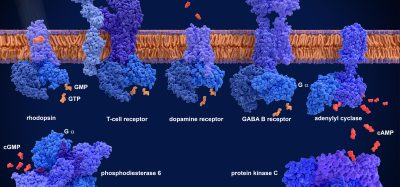Researchers develop screening model to evaluate potential cervical cancer drugs
Posted: 4 April 2023 | Ria Kakkad (Drug Target Review) | No comments yet
Oregon State University researchers have developed a screening model for rapid testing of multiple drug compounds, using a 3D cellular platform.


Researchers from Oregon State University, US, have developed a model enabling the simultaneous and rapid testing of multiple drug compounds, opening the door to large-scale screenings that can uncover new therapies and personalised medicine options. Details of the study were recently published in the Journal of Biomedical Materials Research.
A key element of the model is that it uses a three-dimensional cellular platform, which differs from the historic means of testing the effectiveness of anti-cancer drugs: a single layer of cells.
“Two-dimensional monolayer models are not able to fully replicate the tumour microenvironment since nothing in our bodies resembles a single layer of cells on a piece of hard plastic,” said lead scientist, Assistant Professor Kailin Fogg. “Cancer metastasis and the creation of new blood vessels the tumours need are inherently three-dimensional processes and need to move through materials that better resemble the body.”
But many 3D testing techniques do not match up very well with standard high-throughput screening (HTS) methods, Fogg said. 3D testing so far has mainly relied on plates with 24 wells, and 96-well plates are the norm for high-throughput screening. The plates, which hold the samples and compounds to be tested, resemble large-scale ice cube trays.
HTS is the automated testing of the therapeutic effectiveness potential of large numbers of different molecules simultaneously. It accelerates drug analysis because vast “libraries” of compounds can be screened quickly and cost effectively.
“Our goals were to develop and validate a tumour in a dish model that approximates the cervical cancer tumour microenvironment, interfaces with existing high-throughput methods, and can evaluate cancer invasion and blood vessel formation over time,” Fogg said. “We engineered a multilayer, multicellular model of cervical cancer in a 96-well format that is significantly better than any currently available pre-clinical drug screening platform.”
The model enables the evaluation of hundreds of drugs at the same time and the rapid identification of those able to thwart cancer invasion and the formation of new blood vessels, she said. That is important because at present there are no drugs used specifically to treat cervical cancer.
“I am excited for the platform we came up with to be used in future studies that screen large compound libraries for drug discovery and precision oncology,” Fogg concluded. “The platform captures cell behaviour in the tumour microenvironment and accounts for patient-to-patient variability.”
Related topics
Drug Discovery, Drug Discovery Processes, Drug Targets, High-Throughput Screening (HTS), Oncology
Related conditions
Cervical cancer
Related organisations
Oregon State University
Related people
Assistant Professor Kailin Fogg








